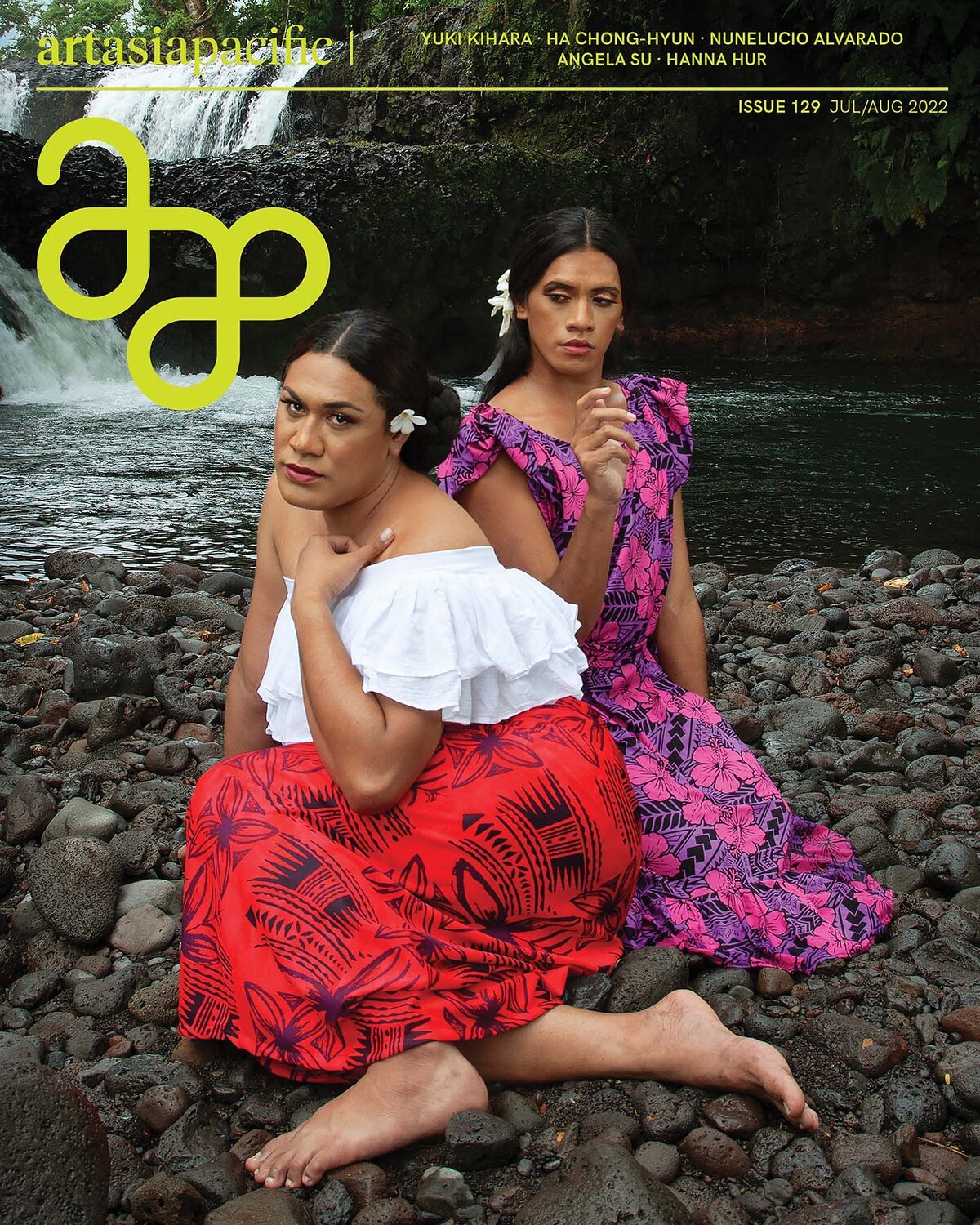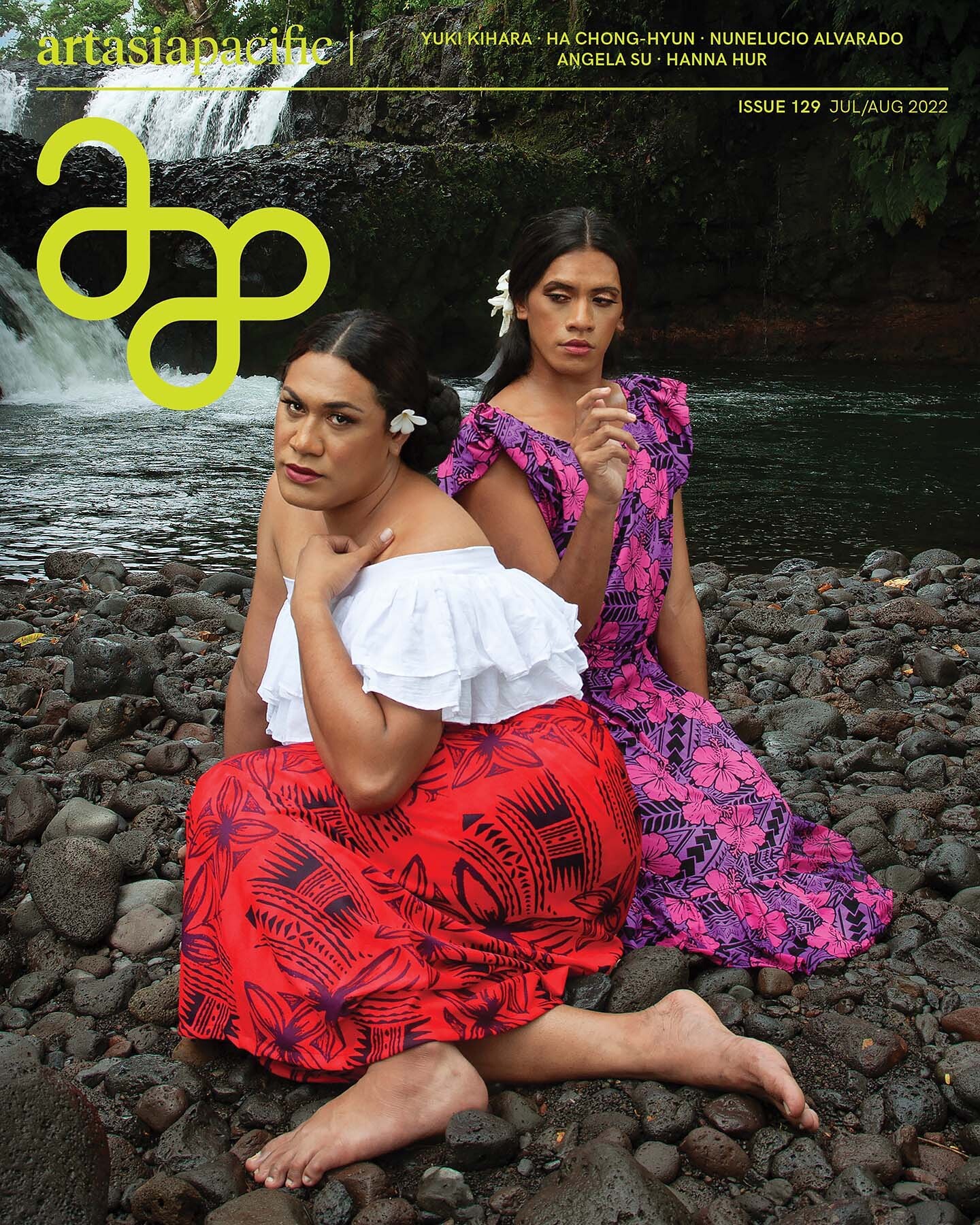Upcycling is not just an environmental practice. Artist Yuki Kihara also applies the term to her treatment of post-impressionist painter Paul Gauguin’s exoticizing depictions of Pacific islands communities. In “Paradise Camp,” the New Zealand Pavilion at the 59th Venice Biennale, Kihara presents photographic tableaus, based on Gauguin’s compositions, that bring into focus Samoa’s third-gender groups, including Fa‘afafine, as well as the sociopolitical conditions and environmental threats that they face. In this way, Kihara’s photographs “decolonize the myths and perceptions…that [Gauguin] perpetuated, and reveal these touristic images of paradise as a cliché.” In our cover feature, Kihara shares more with assistant editor Nicole M. Nepomuceno about her approaches to subverting heteronormative conceptions of paradise.
The six-decade-plus practice of Ha Chong-Hyun—whose experimental work is also being celebrated in a solo exhibition in Venice this year—is the focus of our second feature. Tracing the experiments that led up to Ha’s renowned bae-ap-bub (back-painting) technique, Seoul desk-editor Andy St. Louis dissects how “Ha endows his works with [an] inimitable presence and tactile tension that bespeaks the intensity and conviction of his experimental spirit.”
For our third feature, contributor Portia Placino takes readers to Sagay City, on the Philippine island of Negros, where Nunelucio Alvarado is based. Since the 1970s, Alvarado has been invested in the communities of Negros, particularly its migrant workers, or sacadas. Along with depicting sacadas and creating other social-realist paintings centered on the plight of the homeless, gun violence, and the treatment of women, Alvarado has initiated public-art projects to stimulate the creative energy of Negros’s residents and enliven their neighborhoods.
For Up Close, the editors examine Chu Chun-Teng’s video installation Eel (2021), on rite and ritual; Tap Chan’s recent sculptures, which confound binaries of artificial and natural; and Jennifer Tee’s tulip-petal collages based on Sumatran weavings. Closing out the Features section, for Inside Burger Collection, writer and editor Kabir Jhala interviews the artist duo Elmgreen & Dragset about their solo exhibition “Useless Bodies?” at the Fondazione Prada in Milan, where their ability to charge architectural spaces with unexpected stories that point to uncertain futures was fully evident.
The Profiles section spotlights Angela Su—Hong Kong’s representative artist at the 59th Venice Biennale—whose “drawings, embroideries, videos, and performances…play with the boundaries between body and machine, life and death, pain and pleasure, and most significantly, fact and fiction,” writes associate editor Pamela Wong. For the second profile, Mumbai-born Amol K. Patil, a participating artist of documenta fifteen, spoke with contributor Kerstin Winking about the influence of his grandfather’s poetry and his father’s plays on his art and activism against casteism. In the Essays section, deputy editor and deputy publisher HG Masters reflects on the discussions held at Sharjah Art Foundation’s March Meeting 2022, titled “The Afterlives of the Postcolonial.”
Desk editor Hutch Wilco files a dispatch from Shanghai, where a zero-Covid policy has severely damaged the city’s art scene. Asked to contemplate what is a good or bad art education, in The Point, artist Ahmet Öğüt shares lessons and values from artists he considers his mentors. In One on One, Rushdi Anwar reflects on the influence of 17th-century Persian-Iranian philosopher Mulla Sadra Shirazi on his own multimedia works, which explore states of transformation.
Lastly, in Where I Work, Los Angeles desk editor Jennifer S. Li visited the studio of painter and sculptor Hanna Hur, whose relationship with the recurring motifs and inspirations behind her practice is continually deepening. “We can’t look directly at the sun. The same goes for inspiration. We can’t look at it or understand it without being destroyed,” says Hur. Yet what is evident in Hur’s work, like that of Kihara, Ha, Alvarado, and many others in this issue, are the endless, transformative powers of creative energy.
A digital edition of the full issue is now available for purchase on Zinio, Google Play, iTunes, and Magzter.
July 5, 2022
July/August 2022


